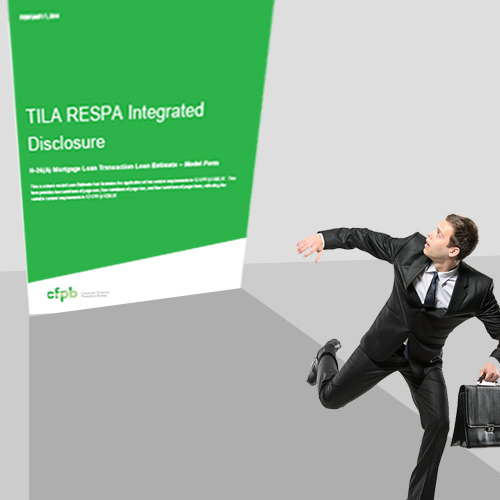—No, they really are this time.
The CFPB has released an updated small entity compliance guide on the TILA-RESPA Integrated Disclosure rule. As you may remember the Dodd-Frank Wall Street Reform and Consumer Protection Act directed the newly created CFPB to integrate the mortgage loan disclosures under TILA (Regulation Z) and RESPA (Regulation X) back in 2012. The two different sets of loan disclosures have been used for the past 30 years with considerable overlap, inconsistency, and confusion. CFPB created model forms but there have been several delays in implementation. The Bureau has now finalized a rule with new, integrated disclosures for implementation in August 1, 2015. The new compliance guide provides detailed information on how to use these new forms.
Basically, there is now just one set of disclosures to provide your customers seeking closed-end consumer mortgages. The four existing disclosures have been combined into a set of two disclosures. The TILA form (the initial Truth in Lending disclosure) and the RESPA Good Faith Estimate have been combined into one disclosure called the Loan Estimate. This form must be provided within three business days of application. The second disclosure must be provided to consumers at least three business days prior to completing the loan. This form replaces the TILA (the final Truth in Lending disclosure) and the RESPA (HUD-1 settlement disclosure) and is called the Closing Disclosure. This much is the same from the original proposal in 2012.
The new TILA/RESPA Integrated Disclosure rule compliance guide provides much more page-by-page detail on exactly how to complete the disclosures than anything else the Bureau has provided so far. The guide details the Loan Estimate Disclosure’s general requirements, what information must be collected, the delivery timeframe of the estimate, the good faith requirements and tolerances, and how to make revisions and corrections in the proper timeframes. The sections on the Closing Disclosure explain the general requirements, what information must be provided, delivery requirements, and dealing with necessary revisions and corrections. There is also a section on the Special Information Booklet and other disclosures that may also be required such as the Escrow Closing Notice.
The guide should provide much needed clarity on how to use these new disclosures in a practical and compliant manner, but there are a few other important things to remember. First, you cannot use the new Integrated Disclosures before August 1, 2015, even if you have them ready. Transactions where the application is received prior to August 1, 2015 must use the old forms for TILA and RESPA respectively. Second, the creditor must retain copies of the Closing Disclosure and all other documentation for five years after consummation of the loan. The proposal about electronic recordkeeping has been dropped from the final rule, and records may be maintained by any reasonable method.




